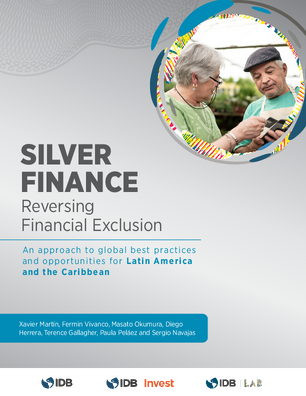Silver Finance: Reversing Financial Exclusion
Date
Nov 2022
According to United Nations estimates, in the next 30 years, the number of people over the age of 65 will double from 750 million today to more than 1.5 billion. Globally, by 2050, the percentage of people over 65 will increase from 9.3% to 16% of the population. This growth will be experienced throughout the world, but Latin America and the Caribbean (LAC) is the region that is aging most rapidly and where the largest increase in the over-65 population will be concentrated, from 9% to 19% of the population in three decades.
Aging and diversity go hand in hand. Some people age while remaining fit, fully mobile and using all kinds of digital tools until the end of their lives. Others, however, face new challenges as they age, such as reduced mobility, significantly reduced income, sensory loss or cognitive impairment. Without ignoring this diversity, the fact remains that we all continue to require financial products and services that adapt to the new needs we encounter as we age.
However, it is increasingly evident that there is a risk of "financial exclusion" of older people due to the digital divide and the lack of products or services designed for their particular needs. This publication aims to share some initiatives in the financial sector to adapt to aging. Disseminating these initiatives in more detail will serve to encourage other financial institutions to develop solutions to reverse “exclusion” of older people.
Being a financial institution oriented to the needs of the elderly implies thinking about the type of attention to be provided, the design of their offices or other channels, the products and services offered, and the way in which a financial institution perceives itself in relation to the elderly. Adapting to the specific needs and demands of the elderly can be a challenge for financial institutions, but it can also represent a great business opportunity.
Aging and diversity go hand in hand. Some people age while remaining fit, fully mobile and using all kinds of digital tools until the end of their lives. Others, however, face new challenges as they age, such as reduced mobility, significantly reduced income, sensory loss or cognitive impairment. Without ignoring this diversity, the fact remains that we all continue to require financial products and services that adapt to the new needs we encounter as we age.
However, it is increasingly evident that there is a risk of "financial exclusion" of older people due to the digital divide and the lack of products or services designed for their particular needs. This publication aims to share some initiatives in the financial sector to adapt to aging. Disseminating these initiatives in more detail will serve to encourage other financial institutions to develop solutions to reverse “exclusion” of older people.
Being a financial institution oriented to the needs of the elderly implies thinking about the type of attention to be provided, the design of their offices or other channels, the products and services offered, and the way in which a financial institution perceives itself in relation to the elderly. Adapting to the specific needs and demands of the elderly can be a challenge for financial institutions, but it can also represent a great business opportunity.




